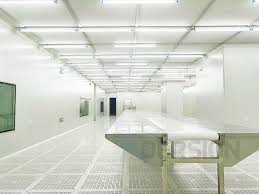COMPANY NEWS
Q&A: The difference and correlation between FFU and laminar flow hood
The full English name of FFU is (Fan Filter Unit). FFU can be used in modular connection, and the use of FFU is widely used in clean rooms, clean workbenches, clean production lines, assembled clean rooms and local class 100 applications.
FFU is equipped with primary and high-efficiency two-stage filters. The fan inhales the air from the top of the FFU and filters it through the primary and high-efficiency filters. The filtered clean air is sent out at a uniform speed of 0.45M/S±20% on the entire air outlet surface. Suitable for obtaining a high level of cleanliness in a variety of environments. It provides high-quality clean air for clean rooms and micro-environments of different sizes and cleanliness levels. In the renovation and renovation of new clean rooms and clean workshops, it can improve the cleanliness level, reduce noise and vibration, and greatly reduce the cost. It is easy to install and maintain, and it is an ideal component for a clean environment.

Large-area use provides a clean environment, mostly used for 100-level or higher. Generally, the floor is required to be a raised floor with a return air passage, and the cleanliness of a lower level should be ensured around this level. The cost is higher.
Laminar flow hood
A laminar flow hood is an air purification device that can provide a local high clean environment. It is mainly composed of box, fan, primary air filter, damping layer, lamps, etc., and the shell is sprayed with plastic. The product can be suspended or supported on the ground, with compact structure and convenient use. It can be used singly or connected in multiples to form a strip-shaped clean area. The laminar flow hood is to form a uniform flow layer after the air passes through the high-efficiency filter at a certain wind speed, so that the clean air flows in a vertical unidirectional flow, thereby ensuring the cleanliness of the working area to meet the process requirements. There are two types of clean laminar flow hoods: built-in fan and external fan. The installation methods include suspension type and floor stand type. After the air passes through the high-efficiency air filter at a certain wind pressure through the fan, the damping layer is equalized. The clean air is sent into the working area in a vertical laminar airflow, thus ensuring the high cleanliness required by the process in the working area.
Compared with the clean room, the laminar flow hood has the advantages of low investment, quick effect, low requirements for the civil construction of the workshop, convenient installation, and power saving. It is currently widely used in precision machinery, electronics, pharmaceuticals, food, fine chemicals and other departments.

The structure is more complex than FFU, it is a local purification equipment, and the environmental conditions are relatively low. It is used to provide local relatively high cleanliness. It is suitable for renovation projects, and the overall requirements are not very high, but only meet local requirements. It can be used alone or in parallel in a large area.
